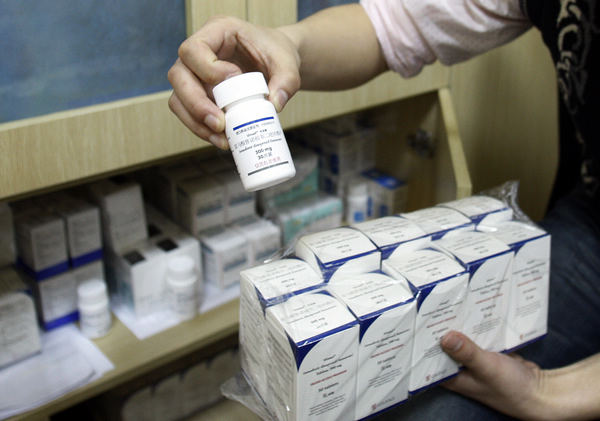Caring approach gives patients new lease of life
Updated: 2012-04-27 08:11
By Shan Juan in Wuhan, Hubei (China Daily)
|
|||||||||||
Enlightened by the internationally recognized initiative "Treatment 2.0", which features improved treatment, treatment as prevention and the promotion of community mobilization, the pilot program is akin to an AIDS-care insurance program and aims to better involve patients in their treatment, according to Cai.
"By sharing some of the responsibility, patients receive improved and more sustainable services," he said.
Currently, under China's "Four Free, One Care" policy, which promises free ART for underprivileged patients who lack health insurance, patients can turn to State-run CDC (center for disease control and prevention) clinics for free medication and other related services.
|
 |
|
Good treatment consists of 70 percent care and 30 percent drugs, says AIDS specialist, Dr Zhao. Zhang Wei / China Daily |
However, the services, including the drug regimen, remain basic and can barely meet the rising demand for high-quality care, said Cai.
Most importantly, because of limited resources, drugs that provoke few side effects, such as Tenofovir Disoproxil Fumarate, which costs 1,400 yuan per patient per month, are still not available to new patients in most parts of the Chinese mainland, including Wuhan.
A TDF-based first-line regimen is recommended by the World Health Organization, citing fewer side effects and improved adherence to the regimen.
By the end of 2011, 156,000 patients with full-blown AIDS, the end stage of the disease when the immune system barely functions, were receiving ART on the mainland.
However, under the health authority's pilot scheme only 20,000 patients, mostly in Liangshan, Sichuan province, and Yili in the Xinjiang Uygur autonomous region, are eligible to receive TDF-based first-line treatment, according to Wu Zunyou, director of the National Center for AIDS/STD Control and Prevention under the China CDC.
In 2011, China included TDF in its treatment guidelines as a first-line drug, but only those who've developed a strong resistance to other drugs receive free TDF as an advanced medication.
"With the fixed government funds, we have to widen the treatment coverage as far as possible and meet basic needs first," Wu conceded.
As the Global Fund to Fight HIV/AIDS, Tuberculosis, and Malaria has decided to leave China at the end of 2012, the country needs additional investment of 1.7 billion yuan over three years to make up for the loss, said Yu Jingjin, director of the disease prevention and control bureau under the Ministry of Health.
"Given China's current economic situation, it's not practical to count on the government for everything, including better drug regimens for all," said Cai. But the choice made by some patients to pay for better drugs and services should also be respected, and doesn't contradict the national policy at all, he stressed. "That's why we tested the co-payment model in Wuhan," he said.
One patient, who would only identify himself as "Roger", said: "I don't mind paying for a better drug regimen and services, as long as I can afford it." He was prescribed a TDF-based treatment in February. "I feel comfortable at the clinic. The people are nice, patient and highly professional, and the drugs have fewer side effects," he said.
Today's Top News
President Xi confident in recovery from quake
H7N9 update: 104 cases, 21 deaths
Telecom workers restore links
Coal mine blast kills 18 in Jilin
Intl scholarship puts China on the map
More bird flu patients discharged
Gold loses sheen, but still a safe bet
US 'turns blind eye to human rights'
Hot Topics
Lunar probe , China growth forecasts, Emission rules get tougher, China seen through 'colored lens', International board,
Editor's Picks

|

|

|

|

|

|





